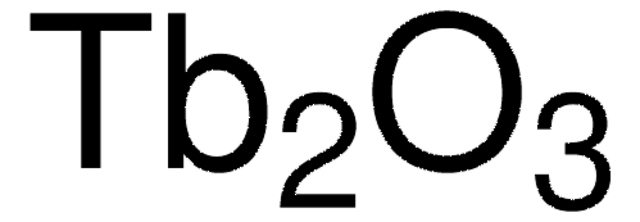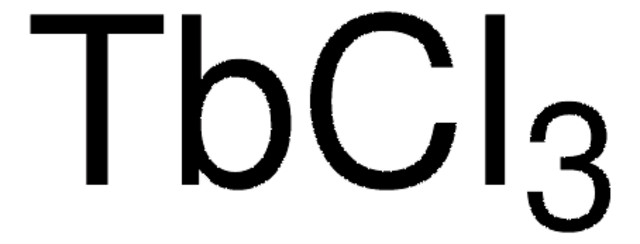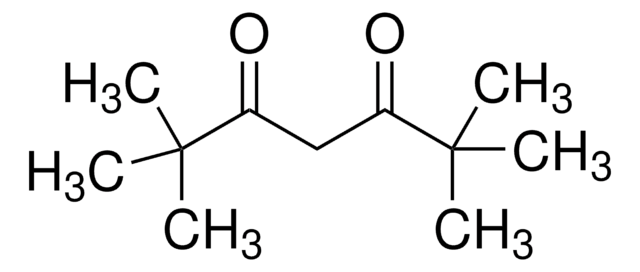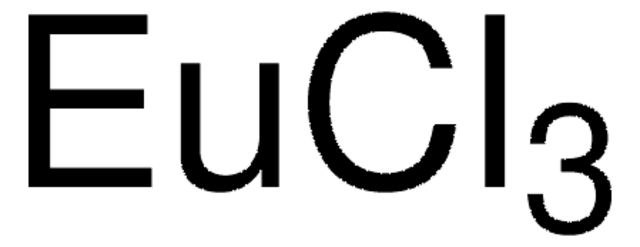212903
Terbium(III) chloride hexahydrate
99.9% trace metals basis
Sinonimo/i:
Terbium chloride hexahydrate, Terbium trichloride hexahydrate, Trichloroterbium hexahydrate
About This Item
Prodotti consigliati
Saggio
99.9% trace metals basis
Forma fisica
solid
Impiego in reazioni chimiche
reagent type: catalyst
core: terbium
Impurezze
≤1500.0 ppm Trace Rare Earth Analysis
Densità
4.35 g/mL at 25 °C (lit.)
Stringa SMILE
O.O.O.O.O.O.Cl[Tb](Cl)Cl
InChI
1S/3ClH.6H2O.Tb/h3*1H;6*1H2;/q;;;;;;;;;+3/p-3
ULJUVCOAZNLCJZ-UHFFFAOYSA-K
Cerchi prodotti simili? Visita Guida al confronto tra prodotti
Applicazioni
It can also be used as aprecursor to synthesize a label-freeaptasensor for the detection of ofloxacin (OFL) residues in the food.
Avvertenze
Warning
Indicazioni di pericolo
Consigli di prudenza
Classi di pericolo
Eye Irrit. 2 - Skin Irrit. 2
Codice della classe di stoccaggio
11 - Combustible Solids
Classe di pericolosità dell'acqua (WGK)
WGK 2
Punto d’infiammabilità (°F)
Not applicable
Punto d’infiammabilità (°C)
Not applicable
Dispositivi di protezione individuale
dust mask type N95 (US), Eyeshields, Gloves
Scegli una delle versioni più recenti:
Possiedi già questo prodotto?
I documenti relativi ai prodotti acquistati recentemente sono disponibili nell’Archivio dei documenti.
I clienti hanno visto anche
Articoli
The rare earth elements impact nearly everyone in the world. All of the people living in advanced technological countries and almost all those living in third world countries utilize the rare earths in their everyday living—the car that one drives (gasoline is refined from oil using rare earth catalysts and catalytic converters reduce the polluting emissions from the automotive exhaust), watching the news on TV (the red and green colors in TV screens), the telephones and computers we use to communicate (the permanent magnets in speakers and disc drives), just to name a few examples.
Il team dei nostri ricercatori vanta grande esperienza in tutte le aree della ricerca quali Life Science, scienza dei materiali, sintesi chimica, cromatografia, discipline analitiche, ecc..
Contatta l'Assistenza Tecnica.













